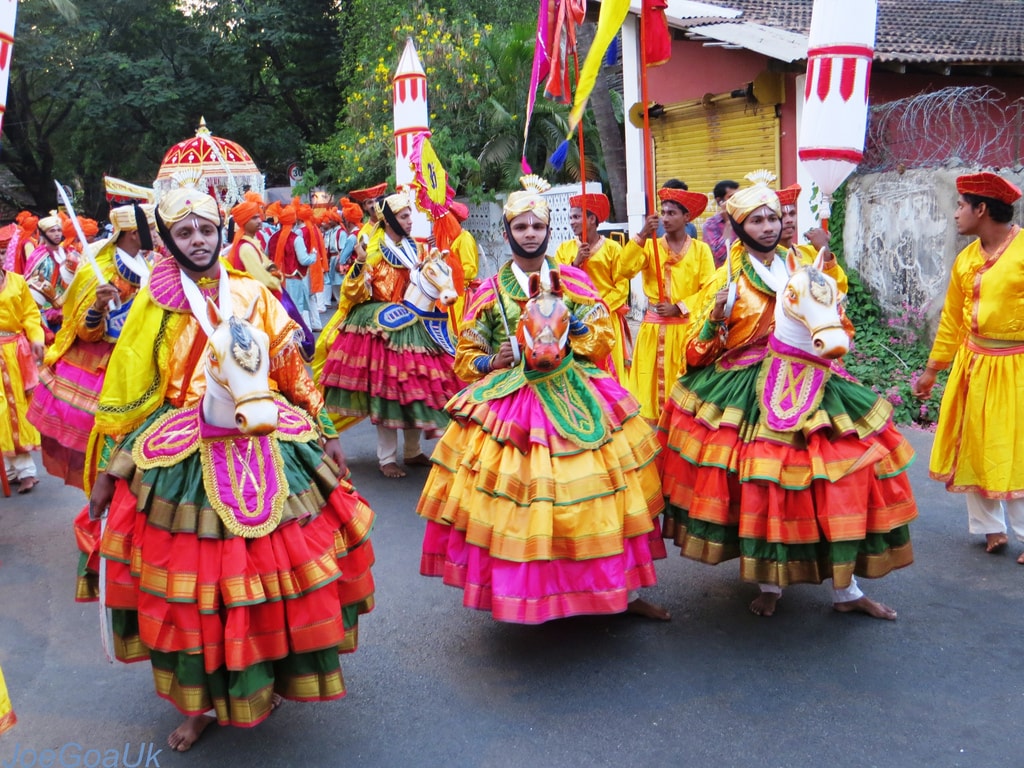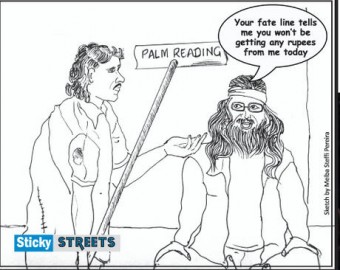Exploding Stereotypes of the Land of Sun & Sand
Sunny beaches, whitewashed churches and fine feni. This is how most tourists see Goa, one of the most popular holiday destinations in India. Over time many stereotypes have embedded in the minds of visitors to Goa. Let’s look at seven widely prevalent myths relating to our sunshine state and crack them wide open.
#1 Goa is a land of western culture.
The European habits of food, dress, music and architecture brought to Goa by the Portuguese certainly give this impression. Especially when compared to the other states of India. But there have been influences of Hindu, Muslim, pre-Hindu animist cultures and Eastern and Asian influences too. The oldest temple in Goa, the Mahadev temple at Tambdi Surla in Sanguem is a 12th century edifice built in the Yadava-Kadamba style. The colourful Shigmo festival is a showcase of folk dance, costume and history that predates the Portuguese. The Goan population is not mainly Christian as often believed; only 26 percent of the people are Catholic. The majority of Goans belong to the Hindu faith, with Muslims, Jains, Buddhists and other denominations in smaller numbers.
#2 Goa was ruled by the Portuguese for 450 years.
Technically this is not true. Only Ilhas (the Old Goa area) or Tiswadi as the taluka is known today was ruled from 1510. Other talukas were gradually added by conquest or accession treaties. Bardez and Salcete were ruled for about 418 years, while Ponda, Canacona and other ‘New Conquest’ areas came under Portuguese rule only by the end of the 18th century, and were hence ruled only for around 170 to 200 years.

#3 The statue at Dona Paula is of the noblewoman Dona Paula and her lover.
The sculpture was created in 1969 by the Dutch sculptor, Baroness Yrse Von Leistner. While historian Heta Pandit informs that this was a tribute to a Robert Knox and his wife, the Goa Tourism website tells us the sculpture depicts the figures of Mother India and Young India, one looking to the East and the other to the West. Either way, sorry to disappoint you, this is no monument to illicit love. But some creative tourist guides love to tell a good story.

#4 Goans are laid back and easygoing.
The image of bikini-clad foreign tourists, and their forerunners the hippies, is often extended to the local Goan populace. While having a liberal and tolerant outlook, Goan families are actually quite conservative and some even verge on strict orthodoxy. Over the past centuries Goans have excelled in the arts, sciences, and industry to an extent proportionally much higher than other states of India. The famed ‘susegado’ trait is often mistaken for laziness. It actually implies a harmonious balance established in one’s life.

#5 The best time in Goa is in the holiday dry season.
Lolling on the beaches of Goa is of course best done from October to May, away from the monsoons. But it is actually in the rains that Goa comes fully alive. The weather is cooler, the land is greener and there are plenty of holiday activities to indulge in. There’s the Sao Joao festival for starters, just around the corner, on 24th June, where the rain is an essential ingredient.
#6 Goan villages and cities have Portuguese names.
While some places like Salvador do Mundo and Penha da Franca were named during Portuguese rule, many village names come from archaic Kannada, the language of the neighbouring state of Karnataka, as the princely dynasties from there ruled over the Goa region for many centuries before the Portuguese. Benaulim is believed to have originated from Bannahalli (‘halli’ meaning village in Kannada), Colvale from Kol-valli, Panjim from Pahajani Khali, Cortalim from Kushastali (a Sanskrit word) etc.
#7 The heritage houses in Goa are Portuguese houses.
There are no such houses in Portugal. The centuries-old mansions of Goa can be called Indo-Portuguese houses, which have evolved as a fusion of European architectural elements and Indian traditions. Similarly, though the Old Goa churches are built on European architectural models, the parish churches in Goan villages are unique home-grown designs. The temples too, particularly those that were relocated, show the influence of Neo-Roman architecture in their decorative elements and lamp towers (deep-stambh).

So there you are. Go forth and travel through the Goan cities and country side now, duly enlightened. And tell your fellow traveller – “You know … that’s actually a myth.”




